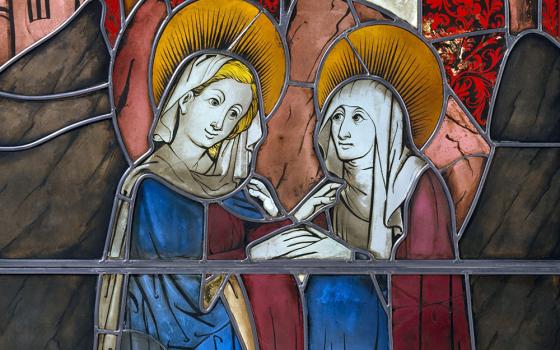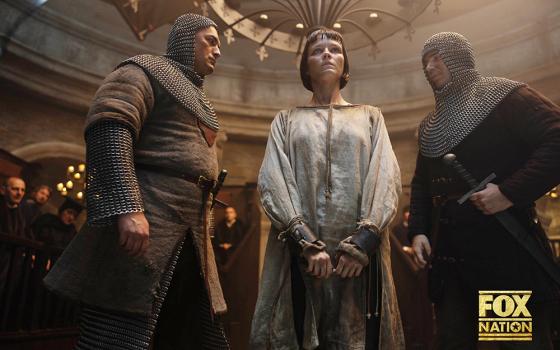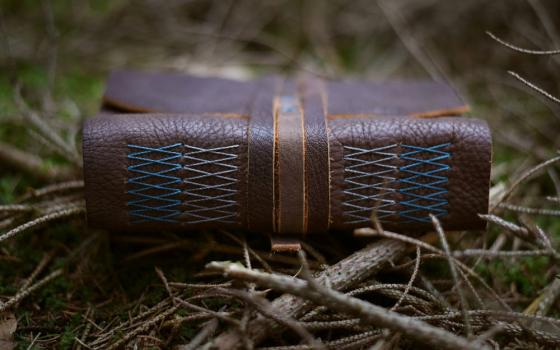St. John’s Abbey, one of the largest Benedictine monasteries in the U.S., released more than 15,000 pages of documents Tuesday related to 18 priests it said “likely offended” sexually against minors dating back to the 1960s.
The disclosure comes as the latest chapter in the jagged history for the Benedictine community in Collegeville, Minn., on the issue of clergy sexual abuse, one that at times has seen it attempt to lead in understanding the epidemic but at others fall ill to the plague of its horrors. Like many others before them, the disclosed documents provide a recounting of what the abbey knew when regarding each monk -- nearly half of whom have died -- and often the attempts to shuttle them from place to place to avoid possible lawsuits and scandal.
In an accompanying statement on the disclosure website, MNtransparencyinitiative.com, the Abbey stressed that no incident of sexual abuse of a minor by one of its monks has occurred in more than two decades.
“The release of the files is an acknowledgement of the harm that has been done. … We in the monastic community grieve the pain and suffering of those who have been harmed, whose lives have been diminished by the pain they suffered,” said Benedictine Fr. John Klassen, abbot of St. John’s Abbey, in a statement.
Klassen said the disclosure covers all monks “who have likely offended against minors,” and disputed claims of other offenders as false. The abbey, which prepared the documents for release with the monks’ consent, said they span almost a century.
The disclosure opens the files of Frs. Andre Bennett, Michael Bik, Robert Blumeyer, Cosmas Dahlheimer, Richard Eckroth, Tom Gillespie, Fran Hoefgen, Othmar Hohmann, Dominic Keller, James Kelly, Brennan Maiers, Finian McDonald, Dunstan Moorse, James Phillips, Francisco Schulte, Allen Tarlton, Pirmin Wendt, and Bruce Wollmering.
None of the 18 priests remain in public ministry, with eight of the 18 deceased. Half of those eight were on restriction or removed from ministry at the time of their death, with the other four dying in the late 1970s and early 1980s. Of those monks still living, nine are removed from public ministry (Hoefgen is no longer a member of a monastery), and one, Phillips, has been on restriction since 2002. Monks still residing at the abbey are under supervision, it said.
The 160-year-old St. John’s Abbey resides in the St. Cloud, Minn., diocese. In addition to housing Liturgical Press and Saint John’s School of Theology and Seminary, its 2,700-acre monastery grounds include the grades 6-12 St. John’s Preparatory School and Saint John’s University, which separately incorporated in 2012.
Nine of the files released Tuesday had been previously made public by Jeff Anderson & Associates as part of an April settlement with the abbey that gave the victims’ advocates law firm access to publicly release them. It had released five in November and one last week before the abbey decided to disclose all of the documents themselves. The Anderson & Advocates website lists the names of 22 Saint John’s monks, with the additional files coming from past settlements with Minnesota dioceses.
The thousands of pages from the monks’ files -- detailing everything from sacramental records and ministerial reviews to medical histories and psychological exams to personal letters and emails -- contain many now-common themes from the church’s sexual abuse crisis, where officials do not always act on warning signs, sometimes on the back of expert opinions, or fail to heed recommendations from counselors and psychologists.
In some cases, priests with known allegations of sexual abuse, whether with minors or college students at St. John’s University, were able to continue traveling to the abbey’s monasteries abroad, including in Japan and the Bahamas.
After the abbey received an allegation in 1992 against Fr. Finian McDonald from a former college student, it recalled him from his assignment in Japan and sent him to the St. Luke’s Institute in Maryland. There, he admitted as many as 15 “sexual contacts” with college students, leading an evaluation report to conclude the priest represented “a very serious moral, legal and financial risk to the Benedictine Order and to St. John’s University.” Still, the trips abroad continued as other allegations came in.
“It is alarming that so many of these credibly accused monks were allowed to work at other parishes, dioceses and communities after St. John’s Abbey received abuse reports,” Mike Finnegan, an attorney with Jeff Anderson & Associates, said in a statement.
Patrick Wall, a former monk at the abbey who now works with Anderson’s law firm, told NCR the files represent for him and his fellow St. John’s graduates “a confirmation and an affirmation, first of all, that we weren’t crazy, and that yes, there were that many perpetrators on campus.”
The document release is the latest in recent years that have seen similar disclosures from dioceses as part of settlements with abuse survivors. In November 2014, the Chicago archdiocese released 15,000 pages of files. In January 2013, the Los Angeles archdiocese made public its own cache of 15,000 pages from 128 files; an additional 68 files were released through last May. In May 2012, the St. Barbara Province of the Franciscan Friars and Brothers, based in Oakland, Calif., released 8,500 pages documenting abuse claims.
Wall said a consistency across each of the document releases is the discovery of names often not yet disclosed. Early reviews of the St. John’s Abbey documents by Anderson’s team has found that trend continues, he told NCR.
The abbey’s historical place in the U.S. clergy abuse crisis is complex. In June 1985, it hosted the U.S. bishops for a conference devoted to the issue of sexual abuse of children by priests. Eight years later, it held another conference, titled “Sexual Trauma and the Church,” which brought together leading Catholic experts on the abuse issue, along with ministers from other faiths, victims’ advocates, abuse victims and clergy abusers in recovery.
Among the participants were Richard Sipe; Jesuit Fr. James Gill, a psychiatrist; Fr. Steve Rossetti, then research director of the St. Luke’s Institute in Maryland; and Servants of the Paraclete Fr. Liam Hoare, who worked at the Jemez Springs, N.M., treatment center for clergy. Bishop John Kinney, chair of the U.S. bishops’ Ad Hoc Committee on Sexual Abuse, sent Fr. Kevin McDonough, vicar general of the St. Paul-Minneapolis archdiocese, as his representative.
Recounting the gathering in NCR, Sipe wrote at the time that in the invitation Benedictine Abbot Timothy Kelly “insisted he wanted the truth; we were to resist any temptation to mere image repair or litigation control. He and his community wanted to understand the scope, causes and nature of sexual abuse by clergy, which has resulted in such trauma to the church.
“And he wanted action,” Sipe wrote. “He expected ‘this meeting will bring to light not nebulous ideas but concrete programs around which we might plan for a future that will enable healing for all concerned in these issues that have brought much pain to our society.’ ”
The conference produced 40 recommendations, one of which was to become “a clearinghouse for all faiths on the issue of clergy abuse,” including developing protocols for handling allegations. Another recommendation was to establish a research center, which it did in opening in 1994 the Interfaith Sexual Trauma Institute..
By that time, the Abbey had begun facing allegations against its own monks. Lawsuits as of 1992 accused five monks of sexual abuse. A decade later, the Abbey brought internal sanctions against a dozen monks.
Never in the history of the abbey, Klassen told NCR in the fall of 2002, have “we experienced a more acute awareness of the frailty of human nature and of the need for repentance, forgiveness, atonement and renewal.”
Wall, the former abbey monk, said it’s that history that makes the revelations from the files even more disheartening.
“That’s why there is a higher duty, there’s a higher standard at Saint John’s – there should be – than almost any other place in the world,” he said. “But man, that’s not what the documents show.”
[Brian Roewe is an NCR staff writer. His email address is broewe@ncronline.org. Follow him on Twitter: @BrianRoewe.]




